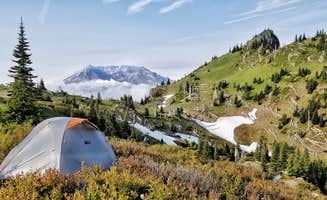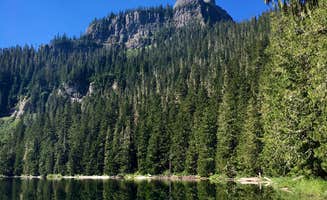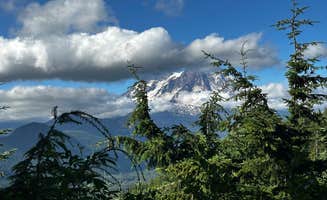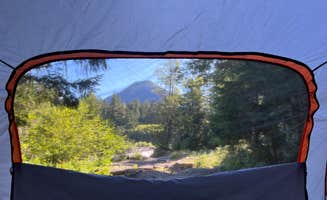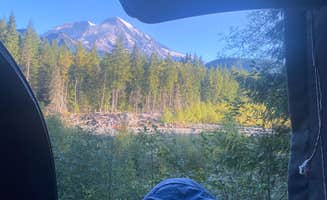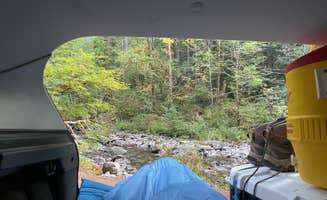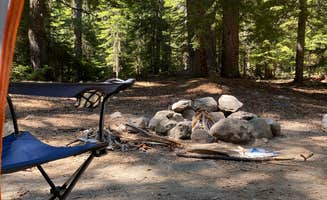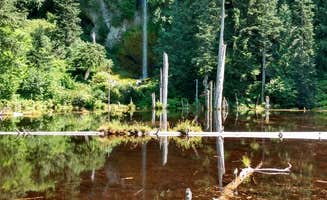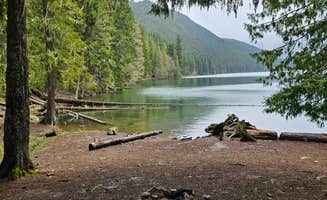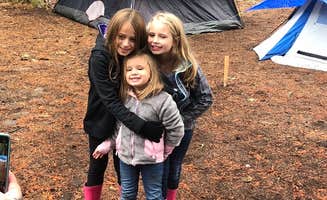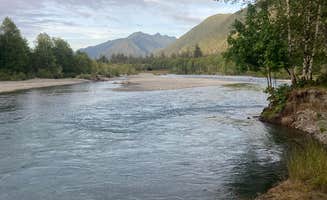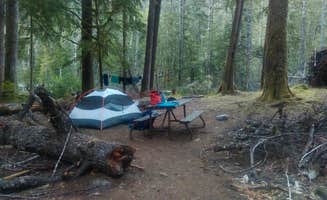Dispersed camping options near Glenoma, Washington provide access to both Mount Rainier and Mount St. Helens wilderness areas. Located at elevations ranging from 1,200 to 4,500 feet, these forest service lands experience temperature swings of 30-40 degrees between day and night even in summer months. Weather patterns can shift quickly in this region, with afternoon thunderstorms common July through September.
What to do
Hiking to high-elevation viewpoints: At Dome Camp, campers can access extraordinary panoramic views after securing one of the limited permits. "In the morning, there was a herd of mountain goats along the ridge to the south west looking down over us, playfully dancing along the steep walls. Woodpeckers and coyotes could be heard in the distance," notes one visitor.
Creekside exploration: The National Forest 84 area offers multiple spots where "the sound of the creek is soothing overnight," according to a camper. The creek access provides natural cooling during hot summer days, though the access road contains numerous potholes.
Wildlife viewing: Many dispersed areas offer opportunities to spot native wildlife. Mountain goats are commonly seen at higher elevations, while forest areas contain numerous bird species and smaller mammals. Some roads also provide access to wildflower meadows in late spring and early summer.
What campers like
Seclusion despite accessibility: Mount St. Helens Dispersed Camping areas receive praise for their remote feel without requiring technical vehicles. "We did come across a few large parties, making us apprehensive that we would experience our ideal peaceful experience, but we were wrong to be. There were dozens of open sites that we had our pick of," reports one camper.
Morning views: The dramatic mountain silhouettes are particularly striking at sunrise. One camper at Small Site but Million $ View mentioned, "It's basically a pull off from the forest service road with a fire ring, but remote enough that you never see anyone. Going on day 3 and I've yet to see another car go by."
Short-hike options: Some of the best free camping near Glenoma requires minimal hiking. At Cora Lake Back Country, one family noted, "Told the kids it was a 2 hour walk. Did it in under an hour. Camped on the right hand shore as it basked in the morning sun." The lake's shoreline offers multiple established sites.
What you should know
Vehicle requirements: While standard passenger vehicles can access many sites, rough forest roads require careful driving. For Small Site but Million $ View, a reviewer warns, "Forest road for around 8 miles is a bit rough with potholes so I wouldn't recommend bringing a low car into here."
Wildlife encounters: Bears are present throughout the area, requiring proper food storage. Bug protection is essential in early summer, particularly at lower elevations near water sources. Mosquitoes typically peak from mid-June through July.
Weather preparedness: Temperatures can drop significantly at night even during summer months. Rain gear should be packed year-round as conditions can change rapidly. Free camping near Glenoma, Washington often means exposure to mountain weather patterns that can include sudden storms.
Tips for camping with families
Accessible short trails: Sluice Creek Dispersed Spot offers easier access for families with young children. While one camper noted, "You are just pulled over on the side of a gravel road," others mention it's "8 min from brewery and isolated," making it convenient for families who want nearby services.
Early arrival strategy: Secure better sites by arriving mid-week or before noon on weekends. Most popular areas fill quickly on Friday afternoons during summer months.
Frog watching opportunities: Several creekside locations offer amphibian viewing for kids. At Cora Lake, one visitor noted "Tons and tons of frogs and tadpoles which meant no bugs!" making it a fun wildlife experience for children.
Tips from RVers
Turnaround challenges: Forest roads often lack adequate turnaround areas for larger vehicles. One camper at Small Site but Million $ View noted, "It was hard to turn around at the top since they had a party of three cars parked." Scout ahead if possible before taking an RV up narrow forest roads.
Level site scarcity: Most free dispersed camping locations have limited naturally level areas. Bring leveling blocks as many sites have 5-10 degree slopes.
Road condition monitoring: Call the Gifford Pinchot National Forest office (360-891-5000) for current road conditions before attempting access with larger vehicles. Washouts and downed trees can block roads with little warning, particularly in spring.


